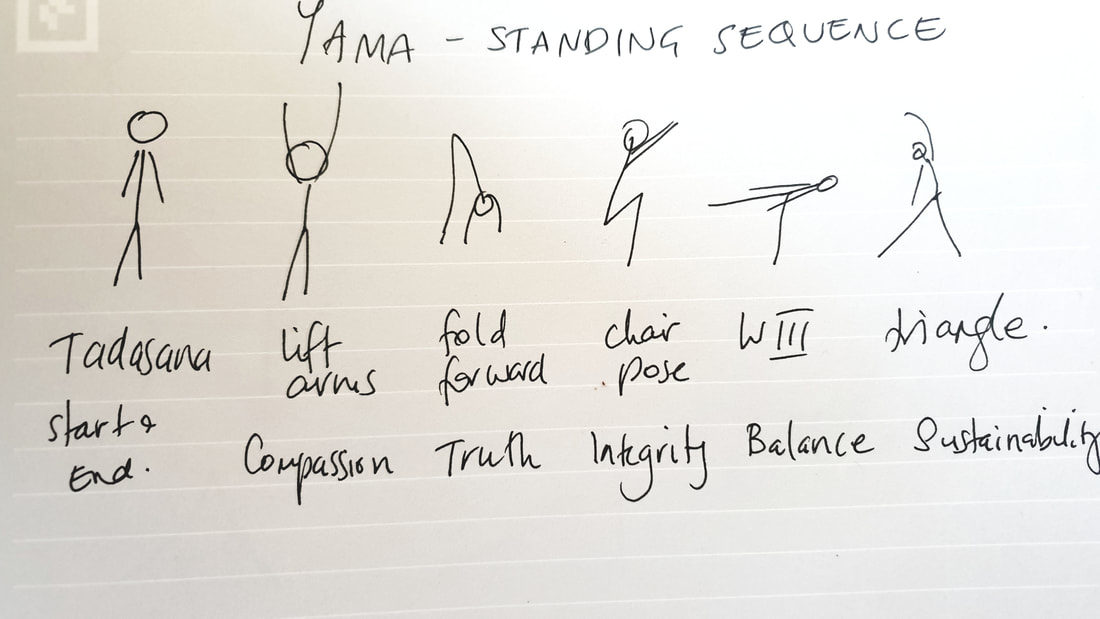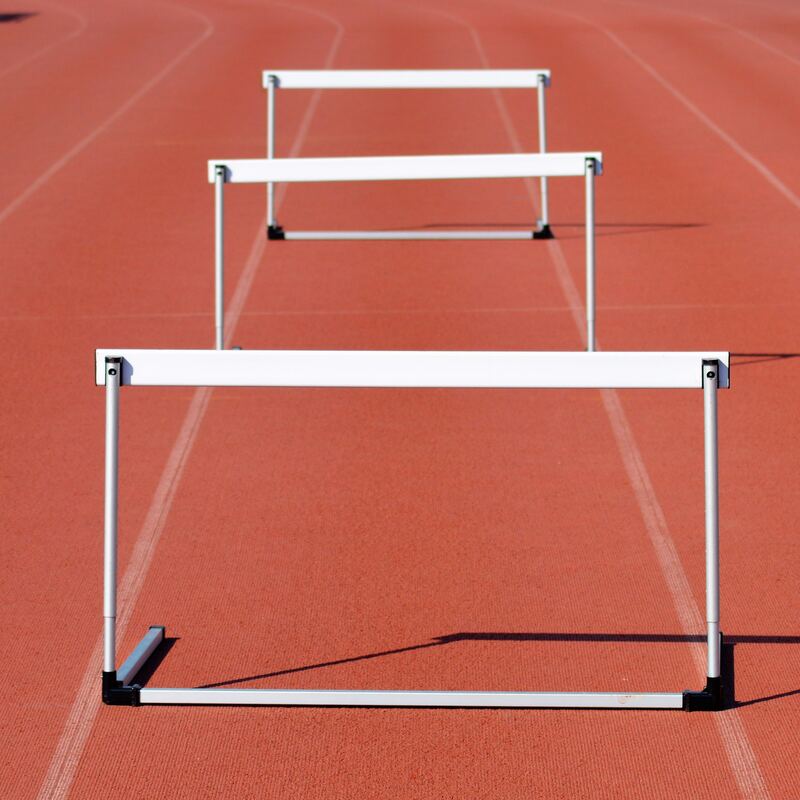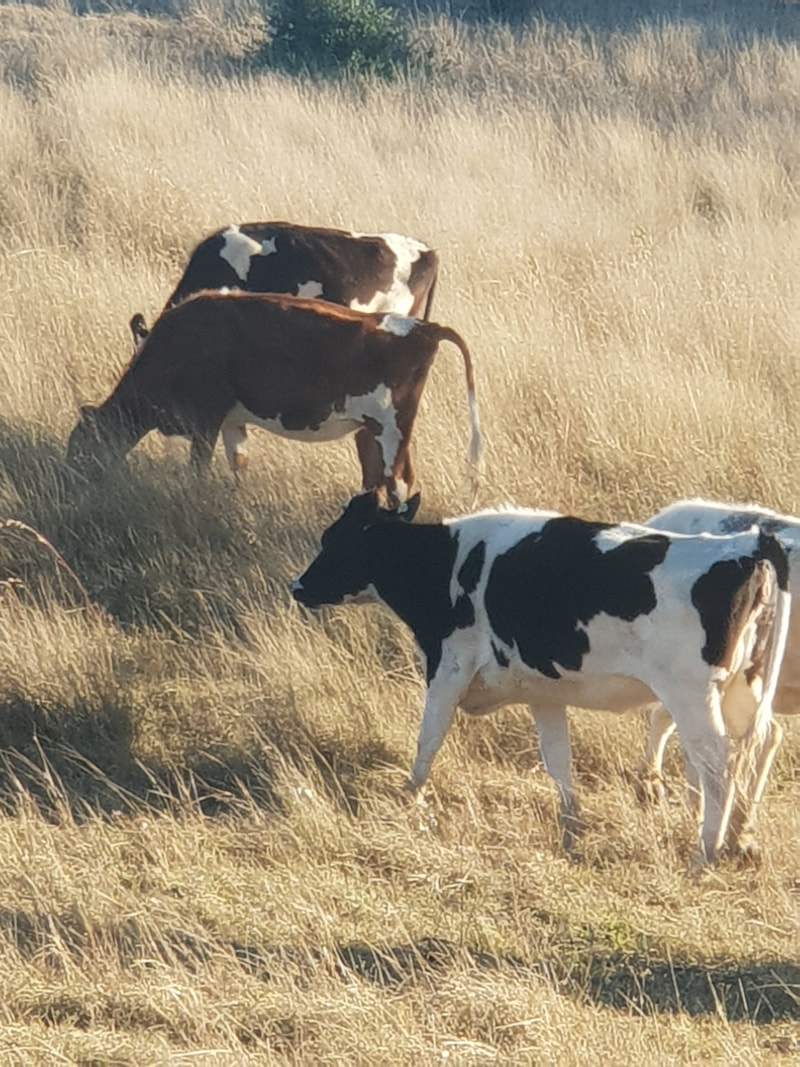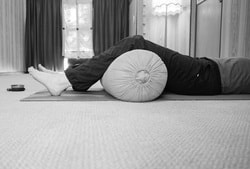|
This week we explored the first limb of yoga- Yama.
Yamas are values we are invited to cultivate in our interactions with others, the environment and ourselves. Like all of yoga, they are practices not something we are needing to perfect. In my daily practice, I have been bringing the yamas to the mat by physically locating them in space, and then connecting movement through that space as a way of exploring the qualities of the yamas. Associating the yamas in space is an aid to memory, and heped me develop a range of short at home practice sequences, which we explored this week in classes. Some of you asked for some more info so you can practice at home. Below is a summary of each yama with the Sanskrit name, and possible English translations or concepts that I am working with with each. You may have a different take. I have then listed the space and different movements that connect me to each quality. Feel free to create your own sequence to play around with at home! Ahimsa- Non Harming. Compassion, kindness. space above. Raising arms, reaching up, toe balance. Satya- truthfulness, openness, vulnerability, receiving feedback. space below. Folding forwards, touching the ground, child's pose. Asteya-non stealing, integrity, following through, respecting others time, knowledge and experience. Space in front. Chair pose, cat pose. Brahmacharya, Balance moderation, containment of energy, healthy boundaries. Space behind. Warrior 3, arms behind, back leg lifted, Dog pose. Aparigraha, Non possessiveness. Not over consuming, wanting what we have, sustainability. Space to the sides. Side beds, triangle, gate pose. Always start and finish with a checking in in a neutral place, Tadasana, easy rest etc and allow yourself to become aware of the effects of the practice to end. It is often tradition to dedicate the fruits of your practice to the benefit of all beings so you may like to try this to end. let me know how these qualities show up in your week. We are exploring Niyamas next week, hope to see you. With love Maureen
0 Comments
Beginnings are important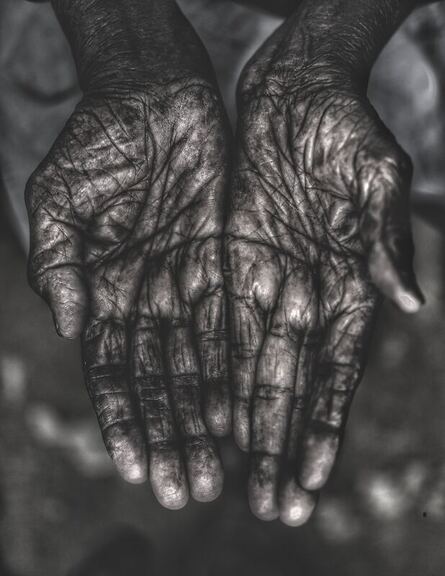 This is especially so in the opening of that great text, the Yoga Sutra. It begins: Atha Yoganushasanam. Both a title, and a précis of what the Yoga Sutras offer all in that short opening line. Atha- Now. Yoga- Wholeness; Connection Anu –within, here shasanam- Instructions; teachings, how to find something. So in the beginning, Patanjali is telling us the way to finding wholeness is within Here, Now. Sophocles says a short saying often contains much wisdom. The Yoga Sutras are a gallery of short sayings that on their own and collectively contain much wisdom. Especially, in this beginning. There are many translations on the words of the Sutra. The words are great to ponder, but I’m also interested in the tone. How does this beginning sound? How I read this line in my head can change my entire approach to the text. I can read it as a title. ‘Now, here is the teaching on Yoga’. But this sounds dry, lifeless, boring. It doesn’t inspire me to read on. I lose focus, skip ahead to find more important bits, and don’t connect with the meaning of the words. I lose interest. I also can hear it in my head as an instruction. Now! Here is the way to wholeness! Yes here! Now! In this moment. I know something you don’t. Pay attention. You may learn something. It sounds a bit authoritarian. I’m scared to read further. I become alienated by my own swelling sense of fear and dread that I’m not worthy for this information, I’m not ready. But what if I read this line as an offering. “Now”; (gentle voice) “here” (even softer) “is wholeness” Go-on. Take it. It’s ok. You can hold it. It’s here. It’s now. It’s yours. I’ll help you. Hearing the first Yoga Sutra in this soft offering voice gives me strength, calmness and confidence that this material is really meant for me. As I am now. I don’t have to wait until I am more schooled in Sanskrit, or more aligned in trikonasana, or longer in my breath. Here, as I am, now, is ok. Wholeness- Yoga -Connection is available. I don’t even need to reach out and take it. It’s offered, freely available. And because the Here can be hard, Patanjali is soothing the way, offering me guidance in the journey. Letting me know that there are tools available to use to stay in the Here and Now, and he can help me access them. And I want to turn up the palms of my hands and accept the offering, and come in to this teaching, into the wholeness of the moment. And I’m ready to be guided through the wisdom of the Sutras. Now, Here; is wholeness. Let's begin again See you Thursday x 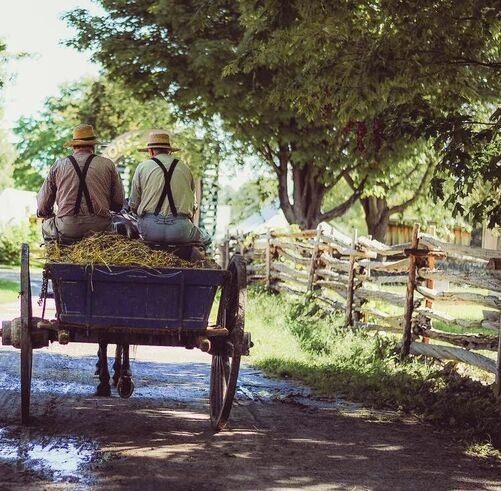 I've been using this break in my yoga teaching to revisit some translations of the Yoga Sutra. This text is approximately 2000 years old and outlines the philosophy and practices of yoga in a series of short concise statements ( think a thread of tweets!) . Borrowing heavily from the Buddhist tradition and strongly influencing Tantric traditions that followed, this text is such an important text for any student of yoga. One of the reasons I love this text is that it sets out so logically what yoga is, why we should practice and also how we should practice. Yoga is a truly Biopsychosocialspiritual practice, in that it engages us on the level of our body, our community, our minds and emotions and our relationship with ourselves. The word yoga is often translated as to unite or yoke together. The word yoke is like connecting a wheel to an axel. You want the connection tight enough that the wheel doesn't come free, but lose enough that the ride is smooth. This is yoga, being simultaneously in control of and also at ease with our own minds, hearts and lives. It also allows us to live at ease in our physical bodies and to be compassionate, and emotionally resilient. In Sanskrit texts, according to my teacher the most important things are said first, and the beginnings of the Yoga Sutra focus on the what and why of yoga - with a very clear definition. Here is a summary of the first three sutras: 1.1 Now, here is the teaching on Yoga 1.2 Yoga is the stilling of the fluctuations within the heart/mind 1.3 for then the heart/mind can rest in its natural state, which is unbounded joy. ( my current understanding and interpretations based on a variety of translations ) The what of yoga is therefore about seeing through the stories of the mind. It is about not getting hooked into the many dramas that play put in our heads- the catastrophic or over thinking, the negativity bias, comparisons to others and so on... The important thing to note here, is that Yoga is a state of being, where we de-tangle ourselves from the busy-ness of our thoughts and emotions. Where we can join with our essence nature, and ride through the bumps with ease, just like when we have good shock absorbers - or a well fitted axle. This also answers the why of yoga. Abiding in this state of yoga allows us experience the joy of our essence nature, to have clarity and peace as our guide for all our actions. For some this is a spiritual pursuit, and the practices of yoga are compatible with all of the wisdom traditions. For atheists, or non-dualists like myself, it offers a belief in humanity, that we are in essence compassionate and kind beings, who can live united in peace with ourselves and with others. The Yoga Sutra goes on to explain what happens when we are not in a state of yoga - we experience suffering because of our own ignorance and misunderstandings. It then goes on to describe the specific obstacles to yoga in detail, and the variety of practices to overcome these obstacles. The practices then become the how of yoga. The text describes 8 aids to yoga (often translated as limbs). These aids provide a very systematic process of giving ourselves the best chance of experiencing the state of yoga- a still mind and joyful heart. I'll be exploring these 8 aspects of the practice of yoga in the coming term, where we will go back to the beginnings, to the root of yoga and start with fresh eyes... I am grateful very day for the teachings of this ancient practice. 2020 has certainly been a very bumpy ride so far..the teachings of yoga have greatly helped me navigate through, and I am looking forward to sharing the what, why and how of yoga with you when we begin again at the end of the month. 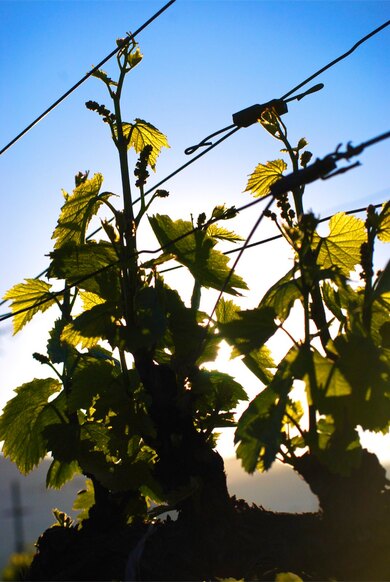 Recently as part of our renovations we replaced a rotten pergola. This pergola is home to a flowering native vine that has probably been there for 40 years. I cut it back pretty heavily so the new wooden frame and wire could be installed. It's rewarding me with vigorous regrowth, even in this cold winter. My new favourite mindfulness hobby is to watch it grow. When needed I will climb up on a ladder and give it a gentle wrap or encouragement in the right direction. There are about 8 or so wires with a gap of about a metre or so between them. What I am noticing is that the tender new shoots are doing something clever. They are intertwining together to make themselves stronger and they are making it across the gap to the next supporting wire. The ones without a mate however are blown around in the wind and at the mercy of gravity heading down away from the wire, where the ones with a mate are not only stronger but seem to have a clear aim of where they want to go... I have always admired the resilience of nature, and watching this vine has highlighted the message that we are stronger together, and by reaching out to others, we can overcome challenges. And this I think is the beauty of in person yoga classes. Through practicing with others we can be each others' support;, we can lend our strength and draw from others as needed. We can encourage each other to grow and persist, even in the silence of our own practice. My brief foray into online teaching was rewarding as it allowed me to connect with some of you who moved away and hasn't been able to be at classes. But I miss those opportunities to come together to practice yoga and meditation in the presence of others. I am looking forward to seeing some people this weekend for the Winter Solstice retreat. And now that the State Government has eased restrictions on group yoga classes I am starting to plan for term three. If you would like to join me in person, please let me know through the usual channels. yoga ethics for covid-19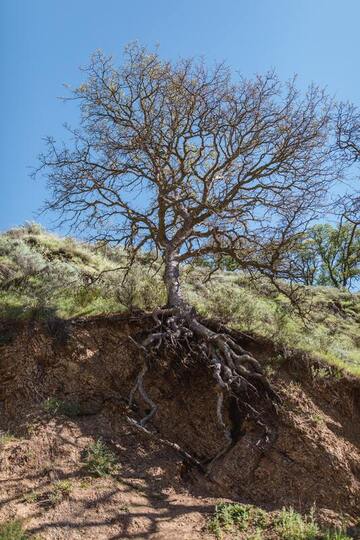 For the last what already feels like forever I have been working from home in my day job as a counsellor. My partner is also working from home, I have two kids in year 11 and one in year 12 who have all been schooling from home as well as my adult son who is studying online at University. With all 6 of us, it's a full busy house, and my experience is that I am more time poor rather than time rich. My yoga space is now my office. The lounge room is usually busy with someone doing something. The new deck is the kids art room, and my meditation deck is too dark or cold in the times I am free to practice.....To be honest, it has been hard to find room and time to roll out a yoga mat and do my " normal" practice. However, I have still practiced the yamas and the niyamas- the attitudes or ethics of yoga, and this is a great time to water the foundational roots of my practice. I thought I would share my Covid-19 ethics with you here, and the wisdom practice that comes from these. In one of the Sanskrit texts on Hatha yoga, the 'Yoga Sutra', the author, Patanjali, sets out an eighfold path system of yoga. It contains ethics (yama and niyama), posture, breathing, relaxation, contemplation, meditation and absorption. I like to visualize yoga as a tree, the yamas and the niyamas are like the roots of that tree. They provide nourishment and foundational support to the whole tree. Asana and pranayama - often what we think of as yoga, are like the trunk of the tree, as they provide the strength and structure for the other paths. The branches of the tree are expressions of the pathways of relaxation, concentration, meditation, and absorbtion. Focusing on the roots of the tree seems to be a good place for me to attend to right now. Just like the health of any tree is dependent on its roots, any yoga practice not sustained with ethical practice will not lead to the intended personal growth that the system of yoga offers. The yama and the niyamas are attitudes or characteristics we are invited to observe and cultivate in our lives. It is important to think of them as practices, not ideals to harshly judge ourselves by. This is an important point. Like many I can have perfectionist tendencies- if i can't do something well, I tend to avoid it, or I can get caught up in a swathe of negative self talk about my failures. This is one of the habits these practices help to change, but we need to be aware of it when it comes. Just like an asana expressed in my body will look slightly different to an asana expressed in some one else's body, my expression of yamas and niyamas may be different than someone else's. These attitudes are helpful tools to help us clarify our own values and purpose, and identify ways to live our lives with meaning and purpose- all things we know lead to good mental health. The yamas are directed externally- practices and attitudes offered towards others, while the niyamas are practices and attitudes to offered inwards, towards ourselves. I have previously written about niyamas as radical self care. There are 10 of these ethical practices in the Patanjali system, although in some tantra yoga texts there are more. I have summararised how my COVID-19 code of ethics at the bottom of the post. Following is a little more detail of each. Niyamas: Ahimsa- Non harming. To me this is being kind and supportive towards other beings. Literally staying at home to slow and hopefully stop the spread of the virus is an expression of Ahimsa at the moment- something we are doing for the safety and well-being of us all. As a practice - I remind myself of this often, and have made the commitment to stay at home for as long as this is required. Satya -Truthfulness. In this time of COVID, this observance is inviting me to face the truth, to stay informed without getting caught up in the drama of the events. Seeing truth clearly allows for clear decision making. I notice that initially I would seek information - truth, but more recently, I have been balancing time consuming news with time attending to present moment activities, such as cooking or cleaning, or playing board games with the kids, in an effort to remember the truth from my own senses as well. My most important practice here is often putting down my phone, and only getting information from valid sources. Asteya - non stealing. This is not just material items, but also not taking credit for others work, or taking others people's time unnecessarily. I've noticed many meetings are shorter and sharper right now as our time is precious. For me this is also about using the earth resources sparingly, and like others I have been working in the garden, mostly weeding, pruning and giving back nutrients to the soil. Aparigraha- Non-possessiveness. We saw why this is so important with the great toilet paper shortage. When we are fearful we tend to cling to all sorts of things, whether it be belief structures or physical items we think we might need in the future. For me generosity has always been an important practice, and this is what this niyama encourages. My current crop in the garden is pomegranates, and I have enjoyed sharing these with the friends and neighbours I have seen. We have also decided to fund particular world health organisation projects as a way of sharing our resources at this time. Brahmacharya -maintaing vitality. For me this is about Don't sweat the small stuff - This yama encourages us to preserve our energy for the most important things whatever they are. Often we have many energy leaks, things where we spend attention that doesn't serve us, excessive worry and ruminations for example. I try and stay present focused and am living day by day in terms of priorities and values, as I find this helps contain my worry most. Spending time to listen to music, read fiction are replenishing activities for me when I feel I need a pick me up. Niyamas Saucha - Purity or Cleanliness. I usually think of this as hygiene for our body and mind. I am taking this one so much more literally now, hand washing, sanitizing our home space more frequently. Yes, all this counts as yoga! Santosha- Contentment, cultivating peacefulness. I am finding the concept of wanting what I have so important, whether that's wanting whats in the fridge/ pantry for tea, or wanting just the company of my self, kids, partner and dogs and chooks who are here with me. Tapas-Effort, This is about having dedication and energy to the things that are important to us. For me, maintaining routines are vital. Even though I work from home I am up, showered and have breakfast and dress for work. I travel to work with meditation. All these things are an expression of discipline, of some effort. Svadhyaya -Self study. Knowing our own habits, strengths and challenges. For me, I tend towards depressive symptoms and have suffered with depression in my youth. Knowing and watching for this is like noticing weeds, of course they are going to come up for. Time to time. Knowing when I need to use my self care strategies such as reaching out to friends, checking my thinking, going for a walk or even yes getting on my mat to move my body are all part of me understanding and providing for my own needs. Self awareness is the most difficult, but most useful self care strategy we have. Ishvara Pranidhana- Surrender to what is. In this time of global pandemic, we can see how real our interconnection is. Lives, income, mental well being all impacted as we come to terms with what is happening. Accepting the need for a change to our normal is an ongoing practice, especially as normal is changing rapidly. The virus is small, but in many ways it is bigger than us. In the same way, our shared commitment to the health and well-being of others is also bigger than myself. To practice this at this time I remind myself often about why I am at home, how I want to protect nor only my lived ones, but others I've not met. Remembering this helps to keep going, and to a also provide a sense of hopefulness, that these shared values can be strengthened as we move through this crisis as a species. Just remembering these things are my practice, and it is usually very informal. What i am doing is noticing when my own buttons are pushed - those moments of frustration towards others and myself, and then smile at my own limitations, or to be reassuring towards the kids, or my partner and be with them in their struggles. I try and use what would have been my travel time to work as meditation, and contemplation of these qualities, by focusing on grounding practices. I try and spend time outside, watching the chickens and the birds and the sway of the trees. And yes this is all legitimate yoga practice, even without a mat, or any fancy body shapes. Covid 19- Yamas and Niyamas Summary 'Through steadfastly abiding in the part of the self that is unchanging, one finds ease within the posture of the moment' 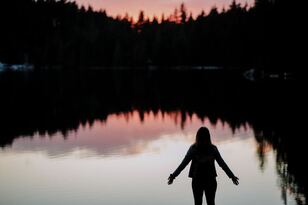 My current reflections about yoga often centre on how I can take my yoga off the mat. Often in our binary world we do one thing and then its opposite. For example, maybe we rush around all day pushing ourselves (effort) and then get home and collapse (surrender). Effort then surrender We may even take the same approach to a yoga class, doing strong asana with effort and then fall into shavasan to surrender. It's the little words that are important here. And. Not then. Effort AND Surrender. Both at the same time. This is my current practice. How can I be engaged and alert, mindful and disciplined, while also being relaxed and at ease? In my yoga asana it is a bit like a dance between feeling into my body and offering myself to the ground. In my meditation it is remembering to soften the expression on my face whenever bringing my mind back if its wandered. With my teenage kids, it is a harder thing. The dance is around compassionate love with guidance and stepping back to watch them learn and make mistakes. In my work it is doing what is required to the best of my ability, and letting go of the outcome of that work. This is not a not-caring, but a surrendering into acceptance of things often outside my control. Donna Fahri's interpretation of the Yoga sutra above resonates with me for its reminder that there is part of me that is unchanging hat I can surrender into any time I remember. And that part is connected to everything else. Our well-being is tied up together, and with that of the planet. I'm focusing my efforts this year on my actions for climate. I think the Earth needs us to show up a little more right now as we are seeing the impacts of climate change. But in this much needed effort, I still want to retain hope and ease and surrender to the part of all of us that is unchanging. So this year, I have decided to do what I can, which is all any of us can do. I'm reducing my single use plastics and buying bulk in reusable containers where possible and affordable. I'm also making my own cleaning products and going solar and hope to grow more of my own food. I'm also committing to walking through a Park every week so I can appreciate this beautiful land around me. Another example of effort and surrender. Yoga is very much about our habits of mind and actions, and not a particular sequence of movement we may do once or twice a week. Our efforts on the mat serve our intentions to live our best life in every moment, and to find ease within each moment. I'm curious, what are you putting effort into? How can you also relax into these things? How do you know when you are putting in too much effort versus not enough? In what ways is surrender easy and in what ways is it difficult.? One of the topics we explored early on in the recent meditation retreat I attended was obstacles to meditation. These are handy to know because they can normalize our meditation experience. It can be pretty easy to get disheartened by how active our minds are or how little progress we seem to be making against some ill-defined yard stick of what we think meditation ought to be.
Knowing the obstacles means we can plan for them, notice them and develop insight into our habits. We can also apply the antidotes to the obstacles when they arise to help us come back to our meditation intentions. 5 different obstacles were highlighted by my meditation teacher, Mal Huxter. Our first task is to notice the obstacles when they arise, and often simply noting or naming the obstacle is a good way to then redirect our mind back to our meditation focus. However for each obstacle there are some specific practices we can choose to strengthen our meditation experience over time. Obstacle one: Clinging, obsessive desire. This is the mind activity where we get fixated on wanting something, eg we might be sitting in meditation but thinking about what we want for dinner, or a movie we want to see, or some other pleasurable activity we wish we were doing. Clinging is when we seek gratification from things, people etc outside ourselves. In meditation it can draw us away from our intention to focus the mind. Antidotes to this obstacle are contemplating the impermanence of all things, cultivating the attitudes of gratitude for what we already have. Obstacle two: Aversion, or avoiding. Essentially the opposite of the first obstacle, this is where the mind finds particular things distasteful and wants to avoid them. In meditation it might show up as boredom as we reject what is showing up in the present moment. We might then find it difficult to stay with our mediation intention because we don’t perceive enjoyment in the practice. The ways to deal with this are to cultivate loving kindness, initially for ourselves. Staying curious and open is also a way of responding to this obstacle. Obstacle three: Lethargy or mental dullness. This is less about being genuinely tired and more about struggling to put the effort in to the practice. Meditation can be mentally exhausting, and a strong intention needs to be developed to persevere with the practice. We can find ourselves falling asleep, even when we are not actually tired. Ways to overcome this include forming a strong intention to stay awake, sitting up rather than lying down, building up time gradually and slowly and forming an intention to be diligent with the practice of meditation. It can also be useful to experiment with having your eyes open, or use movement either walking or yoga as your meditative focus. Sometimes this obstacle comes from an energetic imbalance, and using pranayam or some yoga asana prior to meditation can also be of benefit. Obstacle four: Restlessness and worry. This obstacle shows up as a busy mind, jumping from thought to thought. We are often future focused, our minds replay scenarios and conversations in our head while meditating, or we start planning future events. These thoughts can easily trap us into the stories of the mind while meditating and take us away from focusing on the present moment. Using naming and developing mindfulness of thought is useful to overcome this obstacle. For example, a past argument could be labelled as “the argument” or a “worry” or “that story again”. This stops us from following the train of thought and becoming distracted or drawn in to them. Obstacle five: Paralyzing doubt. These are the kind of thoughts that tell us we are not doing something well enough or make us question our technique, or the teacher, or the space we are in......These type of thoughts often end up in mental paralysis, we might go over the same thing again and again in a loop. It might even stop you from starting a mediation session. To deal with this it is useful to be aware that developing mindfulness, which is an awareness of how the mind behaves, will help cultivate clarity and wisdom and can inform your choices about your life. Making this your intention to your practice can help focus the mind when doubt arises while meditating. Noting and naming doubt is also a useful strategy, as can joining in a class environment to gain encouragement and support for your practice from other students. Sometimes in a meditation practice, all 5 obstacles will show up for me, or sometimes there will be one that I seem to get stuck on. As Mal says, the only bad meditation is the one we didn’t do. Just starting to be aware of what comes up for you as you meditate is a powerful way of developing mindfulness of thought. Reflections on a silent retreatI never realised how loud a herd of cows chewing is. Or how fascinating watching blades of grass being folded over in the wind could be. Approximately 8 hours a day of formal meditation practice is a lot. This included morning yoga and mediation, daily instruction and guided practice for an hour and then three 1.5 hour periods of unguided self practice as well as an evening Dharma talk on the practices with Q and A. Apart from these group sessions, we were silent. There were plenty of smiles and nods and silent and occasional whispered acknowledgements. Everyone supported each other in our shared intention, reveling in the anonymity, we didn't know each others stories, or often even each others names until the last day. There was plenty of freedom to make the unguided times what I wanted. We were encouraged initially to sit for half an hour, practice mindful walking for 30 mins and another 30 minute sit. This was then extended to 45 min sit and 45 min walk. I was determined to try and sit for a full 1.5 hour period and managed 1 hour 20 before my urge to be kind to my knees gave way to child's pose. Gratefully I was able to finally practice a 1.5 hour guided yoga nidra I have had for a while from an English teacher Christopher Gladwell, and was awake and aware for the entire time in that beautiful practice. I also practiced appreciative joy to marvel in this teachers skills to guide such a deep inquiry for that long! One of the things I came to notice is that it's not so much as thought doesn't happen in meditation, but that I became less disturbed by them. They became just another phenomenon raising in the moment, like the magpie song or the smell of cow dung of the feel of my breath on my upper lip. Mal Huxter, long time Buddhist teacher expertly crafted the retreat to allow us to explore a variety of meditations and to understand what they were and why they were important. We were also encouraged to notice the obstacles to mindfulness and I had many moments sitting with doubt and uncertainty and noticing the obsessive parts of my mind. I felt fully supported by Mal Amy and Lisa all psychologists who were available if we needed. The last 10 days has given my mediation practice a much needed turbocharge boost and also reminded me of what I love about teaching yoga and movement- I was privileged to teach a yoga class one morning of the retreat. Mal has recorded the yoga nidra and it should be available on his website soon. I thoroughly enjoyed the experience and am so pleased I went. Walking through the paddocks with the sound of the cows chewing and occasionally mooing was probably part of my favourite part. I'm back teaching this week - come and join me as I continue to explore serenity insight and wisdom. Someone asked yesterday what I hope to get out of my coming silent retreat. It was hard to describe, but- I'm going away to befriend my body and mind without needing to be someone's mother, partner, sister, daughter, counsellor, yoga teacher, neighbour, friend etc.
Its an exciting and scary prospect, as often we define ourselves by our labels, and like ourselves based on how well we judge ourself to be meeting the requirements of each role. And of course with so many different and competing roles we are going to fall short somewhere.. So I'm hoping to meet myself without labels, without any need to meet anyone elses -or my own expectations. And I hope to do so with compassion and friendliness. I'm away on Friday morning for 10 days. Teaching schedule this week includes only the morning class on Thursday (tomorrow). There is no evening class for the next few weeks as I will be spending time with my family before heading off. Will let you know what I find on the on the other side. Maureen x In the evening class we have 5 weeks of self care coming up. I've written a lot about self care in the past- if you haven't yet got my free self care e-book you can get it here. This term I am distilling self care into 5 key components, or the ABC (D&E) of self care. We will focus on one component each week. Here is a brief summary of the skills and enquiries that will inform our weekly sessions. A is for awareness. Awareness is key to everything we do in yoga and key to self care. How do you know when you need self care? How do you know your chosen self care activity is self care and not self destructive? Developing insight, attention and awareness is a skill that can be developed through consistent effort using both active( movement) based and still practices. B is for breath. As I often say in class, you can't breathe in the past or future, so breathing is a useful mindfulness tool which brings us into the present moment. Diaphragmatic breathing also helps regulate the central nervous system to restore calm and relaxation. Learning how to breathe without restrictions is a great tool for physical health and emotional wellbeing. C is for compassion. The attitude we approach ourselves and others is important. Can we be our own compassionate friend? What are the qualities of our inner dialogue? When we engage with ourselves compassionately what does this look and feel like? Turning towards ourselves with compassion can often be difficult and uncomfortable at first, but is a necessary element for genuine self care. D is for Dharma. Dharma is a Buddhist word, which often relates to our life purpose or passion. It invites us to consider what are we contributing to the world, no matter how small it may seem. Alllowing ourselves to truly express our unique passions and gifts is an act of self care as we give the best of ourselves freely to others we also nourish ourselves. This is the element of Dharma. E is for embodiment. How can self care be expressed in our body, in our thoughts and in our actions? How can it become second nature, not an afterthought, and free of any sense of guilt or shame that we dont deserve to be the best version of ourselves? Through using yogic tools, movement, breathing practices, meditation, mindfulness, massage and relaxation we will explore these ABC's in class. Small micro meditations and practices will be offered as homework so you continue to nourish your self and develop the habit of self care. A 5 week term starts Thursday July 25, and costs $60. Casual classes are $17. Concessions are available. Looking forward to seeing you again soon. Warmly Maureen x |

